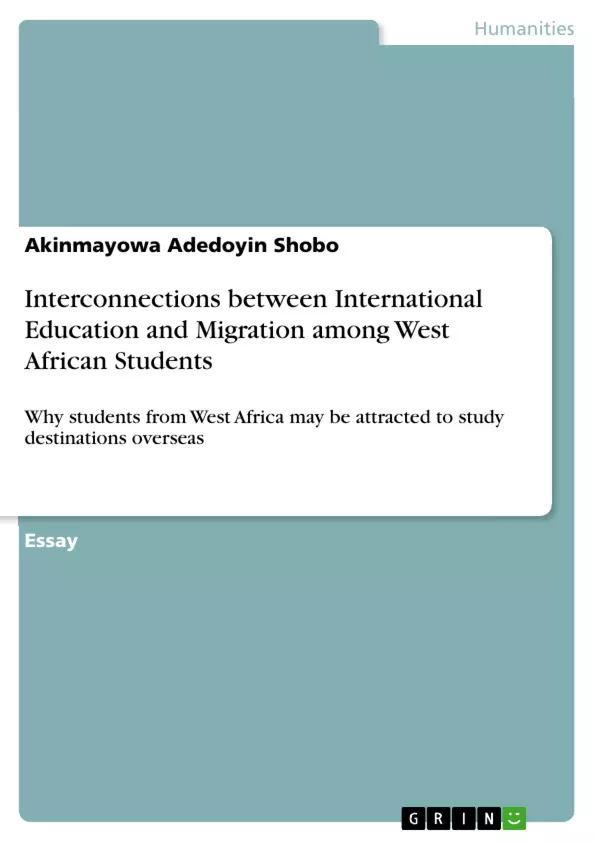In essence, this essay explored the subject of international students’ mobility with focus on how students' recruitment can be effectively managed.
Studying abroad is an important life’s decision that involves moving from one’s home country to a foreign community for educational purposes. However, when associated with classic theories of international migrations, there appear to be a myriad of factors that could pre-dispose or influence a potential migrant – in the context of this essay – an international student from West Africa. Such factors have now been widely aligned with the decision to study abroad; the question of what country to select? which higher education institution to apply for?
It has become highly necessary for governments and stakeholders in the education sector to consider more research into identifying various students' choices in relation to diverse nuances (such as political, economic, socio-cultural factors) within their home countries. This will in turn aid in market segmentation amongst various other international strategic marketing tools employed by higher education institutions in the top study destinations.
Inhaltsverzeichnis (Table of Contents)
- International Migration and Students' Recruitment Process
- Motivation for Overseas Education
- Conclusion
Zielsetzung und Themenschwerpunkte (Objectives and Key Themes)
This essay explores the interconnectedness between international education and migration, specifically focusing on the motivations behind West African students' decision to study abroad. The essay examines the factors that influence their choice of study destinations, emphasizing the effective management of student recruitment processes.
- The influence of classic international migration theories on international student mobility
- Historical trends and factors contributing to West African student migration
- The role of economic and political factors in shaping student mobility patterns
- The impact of globalization and the demand for internationalization in education on student migration
- The motivations and factors influencing students' choice of study destinations
Zusammenfassung der Kapitel (Chapter Summaries)
The essay begins by introducing the topic of international student mobility and its connection to classic migration theories. It highlights the historical context of West African student migration, tracing its roots back to colonial times and the influence of development assistance programs. The essay then delves into the interplay of economic and political factors that have shaped the flow of students from West Africa to study destinations like the UK.
Moving forward, the essay explores the concept of "knowledge flow" as a driving force behind migration, arguing that the pursuit of education is often a conscious and deliberate choice. The discussion emphasizes the globalized context of education and the demand for internationalization, which has spurred the development of recruitment strategies targeting students from countries with limited educational opportunities.
The essay concludes by examining various models that have been proposed to understand the motivations behind international student mobility. It provides insights into the econometric, sociological, and combined models that shed light on the decision-making process and the factors influencing students' selection of study destinations.
Schlüsselwörter (Keywords)
This essay focuses on the key terms: international student mobility, West African students, international education, migration theories, recruitment processes, globalization, internationalization, and the influence of economic and political factors on student mobility.
- Quote paper
- Akinmayowa Adedoyin Shobo (Author), 2021, Interconnections between International Education and Migration among West African Students, Munich, GRIN Verlag, https://www.grin.com/document/992712



